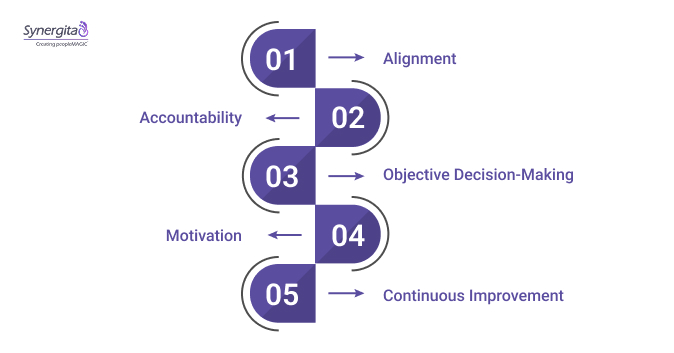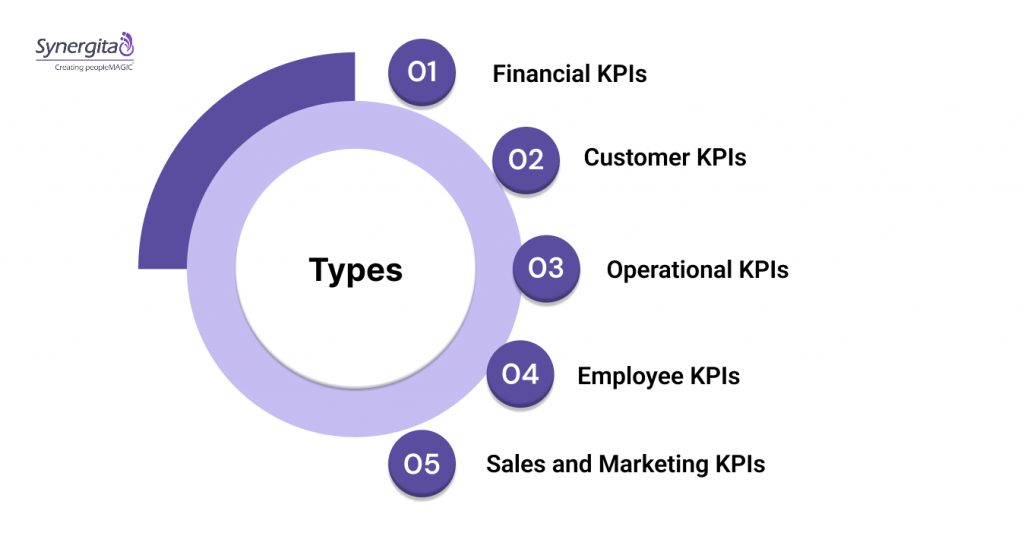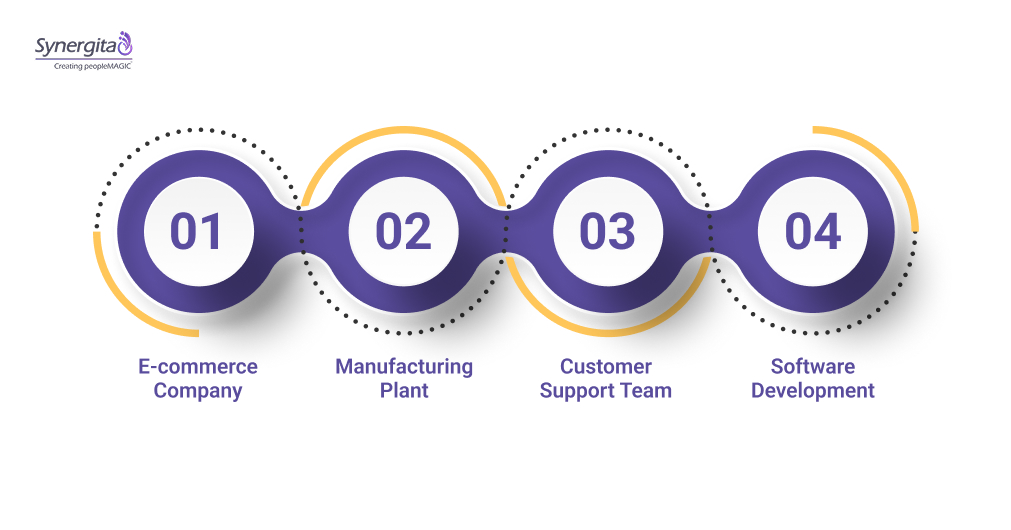Organizations face a big question: How can you clearly measure progress and make sure every team works toward the same goal? KPIs help by turning broad strategies into simple, measurable results. They show your success, highlight problems, and drive ongoing improvements that keep your business moving forward.
But it’s not always easy—many struggle with KPI implementation, wasting effort, and missing targets. Without a clear plan, KPIs can become confusing or irrelevant, causing more harm than good.
That’s why this guide will walk you through every step—from understanding KPIs and why they matter, to choosing the right ones and making them a natural part of your company culture for real, lasting impact.
Key Takeaways
- KPIs turn broad business goals into clear, measurable results, helping track progress and improve performance.
- Effective KPI implementation starts by aligning metrics with your organization’s strategic objectives.
- Involve stakeholders early and select SMART KPIs that are specific, measurable, achievable, relevant, and time-bound.
- Set realistic baselines and targets, and design reliable data collection systems to ensure accuracy.
- Use insightful dashboards and reports to visualize KPI data and communicate its importance across teams.
- Regularly review and adapt KPIs to drive continuous improvement and keep your organization flexible and focused.
What is a KPI?
A Key Performance Indicator (KPI) is a clear, measurable metric that reflects a crucial part of your organization’s goals. Unlike regular metrics, KPIs focus on what truly drives success, like revenue, customer satisfaction, or efficiency.
For example, a sales team might track qualified leads, while customer service monitors resolution time. KPIs help you focus on what matters and make smarter decisions quickly.
Why Key Performance Indicators (KPIs) Matter
KPIs are essential because they turn vague goals into clear, actionable insights. Without them, organizations are essentially left to guess, relying on gut feelings rather than actual data to gauge progress or identify problems early. KPIs give you a clear picture and help you make smarter, faster decisions.
Here’s why KPIs are essential:

- Alignment: KPIs ensure that all members of an organization are focused on common objectives, fostering unity and reducing conflicting priorities.
- Accountability: By providing transparent benchmarks, KPIs hold teams and individuals responsible for their contributions to shared success.
- Objective Decision-Making: KPIs replace guesswork with facts, enabling leaders to make informed strategic adjustments.
- Motivation: Clear targets empower employees to track their impact and strive for improvement, driving engagement.
- Continuous Improvement: Regular KPI monitoring reveals areas needing attention, fueling ongoing performance enhancement.
Ignoring KPIs can lead to wasted effort, missed goals, and slow progress, putting your business at risk of falling behind competitors.
Common Types of Key Performance Indicators

KPIs vary widely depending on industry, organizational function, and strategic priorities. Common categories include:
- Financial KPIs: Revenue growth, profit margin, cost reduction, cash flow.
- Customer KPIs: Customer satisfaction score (CSAT), Net Promoter Score (NPS), customer retention rate.
- Operational KPIs: Production cycle time, error rates, resource utilization.
- Employee KPIs: Employee engagement scores, turnover rate, and training completion.
- Sales and Marketing KPIs: Lead conversion rate, customer acquisition cost, campaign ROI.
Choosing KPIs that cover different areas helps you manage overall performance better and avoids focusing too much on just one thing.
Common KPI Examples

To illustrate, here are some practical KPI examples that organizations use:
- E-commerce Company: Average order value, cart abandonment rate, website traffic.
- Manufacturing Plant: Units produced per hour, downtime percentage, safety incident frequency.
- Customer Support Team: First contact resolution rate, average handling time, customer feedback rating.
- Software Development: Sprint velocity, bugs resolved, deployment frequency.
Such examples serve as templates to customize KPIs aligned with your unique business goals.
Are you ready to move beyond theory and start implementing KPIs that truly drive results? Let’s explore practical steps to make KPIs work for your organization.
How to Implement KPIs: From Strategic Alignment to Continuous Improvement
Effective KPI implementation is more than just picking metrics—it’s about aligning them tightly with your business goals and building a system that drives lasting improvement. This section outlines the practical steps to make KPIs work for your organization, from strategy to ongoing success.
Align KPIs with Strategic Objectives
Effective KPI implementation starts with a clear understanding of your organization’s strategy. Before selecting KPIs, focus on defining your core business goals, such as:
- Increasing market share
- Improving customer experience
- Enhancing operational efficiency
KPIs must directly reflect progress toward these strategic objectives. For example, if your goal is customer satisfaction, KPIs measuring NPS or complaint resolution speed are relevant, while social media likes are less critical.
This alignment ensures KPIs drive behavior that supports business priorities.
Remember to prioritize a focused set of KPIs that highlight what truly matters; measuring too many indicators dilutes attention and complicates analysis.
Engage Stakeholders from the Outset
Involving relevant stakeholders early in the KPI selection process encourages buy-in and ensures metrics resonate across departments. Include team members, department heads, and cross-functional partners in collaborative discussions.
Diverse insights enrich understanding of critical performance drivers and help avoid selecting isolated or conflicting KPIs. When employees participate in defining KPIs, they perceive them as shared priorities rather than imposed targets, enhancing accountability.
Select KPIs That Are SMART
To be effective, KPIs should be SMART:
- Specific: The KPI should be clear and easy to understand, without any confusion.
- Measurable: Quantifiable with available data, enabling tracking over time.
- Achievable: Realistic and attainable with the available resources.
- Relevant: Aligned strictly to critical business goals.
- Time-bound: Defined within a specific timeframe for assessment.
For example, “Increase customer retention by 5% in the next quarter” is more actionable than “Improve customer retention.”
Avoid using KPIs that are too vague or broad because they confuse rather than clarify.
Comparison Table: Good vs Bad KPIs
| KPI Attribute | Good KPI Example | Bad KPI Example |
| Specific | “Increase retention by 5% in Q3.” | “Improve retention” |
| Measurable | “Achieve NPS of 60+ by year-end.” | “Make customers happier” |
| Actionable | “Resolve 90% of support tickets in 24 hours.” | “Address support tickets quickly.” |
| Relevant | “Reduce downtime by 10% for the production team.” | “Post more updates on social media.” |
| Time-bound | “Generate 500 qualified leads this month.” | “Get more leads.” |
Set Baselines and Targets
Begin KPI implementation by assessing your current performance, establishing baselines from historical data or initial measurements. This context helps set realistic yet ambitious targets.
Benchmark your KPIs against industry standards or competitors, where possible, to challenge your teams to reach best-in-class levels. Clear targets provide distinct goals to strive toward and facilitate progress evaluation.
Design a System for Reliable Data Collection
Quality data is the cornerstone of KPI success. Identify trusted data sources for each KPI, define how frequently data will be collected, and assign ownership for accuracy and timeliness.
Automate data collection processes wherever possible to reduce errors and administrative burden. Where manual input is required, create explicit guidelines and checks to ensure consistency.
Develop Insightful Dashboards and Reports
How KPI data is presented significantly impacts decision-making. Develop user-friendly dashboards and reports tailored to various audiences—from frontline employees to senior executives.
Use intuitive visuals such as graphs, heatmaps, and traffic-light indicators to highlight trends, deviations, and areas requiring attention. Prioritize insights that prompt action rather than simply displaying raw numbers.
Plan a Careful Roll-Out
Launching KPIs organization-wide requires more than data publication. Communicate clearly why each KPI matters and how it ties back to overall business success.
Hold training sessions to help employees understand and make a difference with their KPIs. Leaders should openly support the effort and continue to provide help along the way. There might be some early problems, so be ready to jump in with quick support when needed.
Monitor Progress Regularly
Establish a consistent cadence for KPI reviews—weekly, monthly, or quarterly—depending on the KPI nature. Use these meetings not merely to report performance but to engage in meaningful discussions exploring successes, challenges, and corrective actions.
Sharing both wins and concerns transparently maintains momentum and fosters a culture of accountability.
Synergita makes this simple by providing automated reminders, easy-to-use feedback tools, and collaborative spaces that keep your team engaged and accountable every step of the way.
Adapt and Refine as Needed
As your organization grows and market conditions evolve, so too should your KPIs. Implement periodic review cycles such as Management by Performance and Result Analysis (MPRA) to reassess KPI relevance.
Update, retire, or introduce KPIs based on strategic shifts and operational learnings. Being flexible helps keep KPIs relevant and connected to what really matters for the business.
Drive Continuous Improvement
KPIs drive a culture of excellence and learning. Push your team to dig deeper than the surface numbers to find the root causes of performance gaps.
Celebrate your wins openly and use KPIs as key tools for learning and growth. Turn your KPIs from static scorecards into active engines of continuous improvement.
How to Turn KPIs into Growth Drivers
Implementing KPIs is a strategic process that takes time and effort. Start by connecting your KPIs directly to your most important goals and work together to pick SMART metrics based on solid data. Make sure to back up KPI tracking with clear dashboards and strong communication.
A disciplined focus on regular monitoring, flexible adjustments, and open performance talks helps make your KPIs powerful tools that improve your organization’s focus, transparency, and success. Synergita’s cloud-based platform supports every step by helping you align KPIs with your strategy, track progress in real time, and build a high-performance culture.
Want to make your KPI implementation easier? Try Synergita free today and turn your KPIs into powerful drivers of business growth. Or continue exploring our blog library, where we dive deeper into frameworks, strategies, and real-world success stories.
FAQs
1. Can KPIs be used for both individual and team performance measurement?
Yes, KPIs can be customized to measure individual contributions, team success, and overall organizational performance effectively.
2. What is the difference between KPIs and other business metrics?
KPIs focus on key drivers of business success aligned to strategy, while other metrics may track less critical or general data.
3. How do I communicate KPI results across different levels of my organization?
Use tailored dashboards and clear reports with visuals to share insights transparently and foster accountability at all levels.
4. How frequently should I review and update my KPIs for the best results?
Review KPIs regularly, such as weekly, monthly, or quarterly, to ensure they remain relevant and drive continuous improvement as your business evolves.
5. How can I engage stakeholders effectively in the KPI setting process?
Engage relevant team members and leaders early through collaborative discussions to build ownership and align KPIs with diverse perspectives and priorities.



